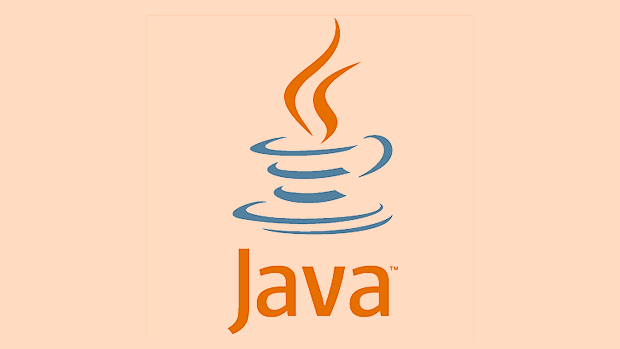The core of mastering Advanced Spring Data JPA is to select the appropriate data access method based on the scenario and ensure performance and maintainability. 1. In custom query, @Query supports JPQL and native SQL, which is suitable for complex association and aggregation operations. It is recommended to use DTO or interface projection to perform type-safe mapping to avoid maintenance problems caused by using Object[]. 2. The paging operation needs to be implemented in combination with Pageable, but beware of N 1 query problems. You can preload the associated data through JOIN FETCH or use projection to reduce entity loading, thereby improving performance. 3. For multi-condition dynamic queries, JpaSpecificationExecutor should be used to combine Specification to build reusable and composable query logic to improve code readability and flexibility. 4. The audit function automatically fills the time and operator through annotations such as @CreatedDate, @LastModifiedBy, etc., and needs to be enabled with @EntityListeners and @EnableJpaAuditing, and provides current user information through AuditorAware. 5. Custom Repository requires the implementation class of interface and Impl suffix. Spring Data will be automatically assembled, which is suitable for encapsulating complex logic such as stored procedure calls. 6. In transaction management, @Transactional can configure readOnly to improve query performance. During batch operations, flush and clear EntityManager should be manually flushed and clear EntityManager to control the cache size and avoid memory overflow. In summary, the truly production-level DAO layer needs to comprehensively use these technologies to balance efficiency, security and maintainability, and ultimately achieve efficient and stable database access.

If you have used Spring Data JPA to do some basic CRUD operations and now want to further improve the efficiency and maintainability of the data access layer, then "Advanced Spring Data JPA" is what you should master in depth. It is not just writing JpaRepository<t id></t> interface, but how to operate the database efficiently, flexibly and securely in complex business scenarios.

The following is a few key directions to take you into advanced usage.
1. Custom query: Not only @Query, but also need to understand native SQL and dynamic splicing
Spring Data JPA provides a variety of ways to execute queries. In addition to method name resolution (such as findByStatusAndCreateTimeAfter ), advanced developers should master it:

-
Advanced usage of @Query annotations
Supports JPQL and native SQL. Native SQL is more flexible when it is necessary to associate multiple tables, aggregate functions, or database-specific functions.@Query(value = """ SELECT u.id, u.name, COUNT(o.id) as orderCount FROM users u LEFT JOIN orders o ON u.id = o.user_id WHERE u.status = :status GROUP BY u.id, u.name """, nativeQuery = true) List<Object[]> findUserWithOrderCount(@Param("status") String status);Note: When returning
List<Object[]>, the field order needs to be mapped manually. It is recommended to encapsulate it into a DTO.
Simplify result mapping using Projection
Defines an interface or class to receive partial fields to avoid loading full entities.public interface UserSummary { Long getId(); String getName(); Integer getOrderCount(); }Then use in
@Query:@Query("SELECT u.id as id, u.name as name, COUNT(o) as orderCount " "FROM User u LEFT JOIN u.orders o " "WHERE u.status = :status " "GROUP BY u.id") List<UserSummary> findUserSummariesByStatus(@Param("status") String status);
2. Pagination and performance optimization: Avoid N 1 query problems
Pagination may seem simple, but it can easily cause performance problems in reality, especially when associated queries.
Use Pageable to correctly paginate
With the method signature plus thePageableparameter, Spring will automatically process the paging logic.Page<User> findByRole(String role, Pageable pageable);
When called:
Pageable page = PageRequest.of(0, 10, Sort.by("createTime").descending()); Page<User> users = userRepository.findByRole("ADMIN", page);Beware of N 1 query
When an entity contains a@OneToManyassociation, returning directly toPage<User>may cause each User to trigger an association query.Solution:
Preload associated data in the main query using
JOIN FETCH:@Query("SELECT u FROM User u LEFT JOIN FETCH u.orders WHERE u.role = :role") Page<User> findUsersWithOrdersByRole(@Param("role") String role, Pageable pageable);Or use DTO projection to avoid loading the entire entity.
3. Specification: an elegant solution for dynamic query
When query conditions are complex and optional (such as background management searches), hard-coded @Query can become difficult to maintain. JpaSpecificationExecutor Specification is a powerful tool for building dynamic queries.
public interface UserRepository extends JpaRepository<User, Long>, JpaSpecificationExecutor<User> {
}Then build dynamic conditions:
public static Specification<User> hasNameLike(String name) {
return (root, query, cb) ->
name == null ? null : cb.like(root.get("name"), "%" name "%");
}
public static Specification<User> hasStatus(String status) {
return (root, query, cb) ->
status == null ? null : cb.equal(root.get("status"), status);
}Combination use:
Specification<User> spec = Specification.where(hasNameLike(name))
.and(hasStatus(status));
Page<User> result = userRepository.findAll(spec, pageable);This method is readable and easy to reuse and test.
4. Audit and auto-filling: @CreatedDate, @LastModifiedBy, etc.
Spring Data JPA supports automatic recording of creation/modification time with users, reducing boilerplate code.
Enable auditing on entity:
@Entity @EntityListeners(AuditingEntityListener.class) public class User { @CreatedDate private LocalDateTime createTime; @LastModifiedBy private String lastModifiedBy; }The configuration class enables auditing:
@Configuration @EnableJpaAuditing public class JpaConfig { @Bean public AuditorAware<String> auditorProvider() { return () -> Optional.of(SecurityContextHolder.getContext() .getAuthentication() .getName()); } }
Suitable for recording operation traces, log audits and other scenarios.
5. Custom Repository implementation: Complement the interface capabilities
Spring Data JPA allows adding custom methods to a Repository.
Structural naming rules: CustomUserRepository interface → CustomUserRepositoryImpl implementation class.
public interface CustomUserRepository {
void refreshUsersFromLegacySystem();
}
public class CustomUserRepositoryImpl implements CustomUserRepository {
@PersistenceContext
private EntityManager entityManager;
@Override
public void refreshUsersFromLegacySystem() {
// Customize complex logic, such as calling stored procedures, batch updates, etc. StoredProcedureQuery query = entityManager
.createStoredProcedureQuery("refresh_users_from_legacy");
query.execute();
}
}Let the main Repository inherit it:
public interface UserRepository extends JpaRepository<User, Long>, CustomUserRepository {
}6. Transaction management and flush mode control
By default, Spring's @Transactional is REQUIRED , but some scenarios require more granular control.
Manual flush control (for batch processing):
@Transactional public void batchInsertUsers(List<User> users) { for (int i = 0; i < users.size(); i ) { userRepository.save(users.get(i)); if (i % 50 == 0) { entityManager.flush(); entityManager.clear(); // Avoid excessive level 1 cache} } }Setting read-only transactions to improve performance:
@Transactional(readOnly = true) public Page<User> searchUsers(String keyword, Pageable pageable) { // Query operation, the database can optimize the execution plan}
Basically that's it. The core of Advanced Spring Data JPA is not "knowing to use interfaces", but:
Choose the right way in the correct scenario - is it using the method name? @Query? Specification? Or a custom implementation?
At the same time, focus on performance, maintainability and database interaction efficiency.
Only by mastering these can the DAO layer you write truly be "production-level".
The above is the detailed content of Advanced Spring Data JPA for Java Developers. For more information, please follow other related articles on the PHP Chinese website!

Hot AI Tools

Undress AI Tool
Undress images for free

Undresser.AI Undress
AI-powered app for creating realistic nude photos

AI Clothes Remover
Online AI tool for removing clothes from photos.

Clothoff.io
AI clothes remover

Video Face Swap
Swap faces in any video effortlessly with our completely free AI face swap tool!

Hot Article

Hot Tools

Notepad++7.3.1
Easy-to-use and free code editor

SublimeText3 Chinese version
Chinese version, very easy to use

Zend Studio 13.0.1
Powerful PHP integrated development environment

Dreamweaver CS6
Visual web development tools

SublimeText3 Mac version
God-level code editing software (SublimeText3)
 VSCode settings.json location
Aug 01, 2025 am 06:12 AM
VSCode settings.json location
Aug 01, 2025 am 06:12 AM
The settings.json file is located in the user-level or workspace-level path and is used to customize VSCode settings. 1. User-level path: Windows is C:\Users\\AppData\Roaming\Code\User\settings.json, macOS is /Users//Library/ApplicationSupport/Code/User/settings.json, Linux is /home//.config/Code/User/settings.json; 2. Workspace-level path: .vscode/settings in the project root directory
 How to handle transactions in Java with JDBC?
Aug 02, 2025 pm 12:29 PM
How to handle transactions in Java with JDBC?
Aug 02, 2025 pm 12:29 PM
To correctly handle JDBC transactions, you must first turn off the automatic commit mode, then perform multiple operations, and finally commit or rollback according to the results; 1. Call conn.setAutoCommit(false) to start the transaction; 2. Execute multiple SQL operations, such as INSERT and UPDATE; 3. Call conn.commit() if all operations are successful, and call conn.rollback() if an exception occurs to ensure data consistency; at the same time, try-with-resources should be used to manage resources, properly handle exceptions and close connections to avoid connection leakage; in addition, it is recommended to use connection pools and set save points to achieve partial rollback, and keep transactions as short as possible to improve performance.
 Mastering Dependency Injection in Java with Spring and Guice
Aug 01, 2025 am 05:53 AM
Mastering Dependency Injection in Java with Spring and Guice
Aug 01, 2025 am 05:53 AM
DependencyInjection(DI)isadesignpatternwhereobjectsreceivedependenciesexternally,promotingloosecouplingandeasiertestingthroughconstructor,setter,orfieldinjection.2.SpringFrameworkusesannotationslike@Component,@Service,and@AutowiredwithJava-basedconfi
 python itertools combinations example
Jul 31, 2025 am 09:53 AM
python itertools combinations example
Jul 31, 2025 am 09:53 AM
itertools.combinations is used to generate all non-repetitive combinations (order irrelevant) that selects a specified number of elements from the iterable object. Its usage includes: 1. Select 2 element combinations from the list, such as ('A','B'), ('A','C'), etc., to avoid repeated order; 2. Take 3 character combinations of strings, such as "abc" and "abd", which are suitable for subsequence generation; 3. Find the combinations where the sum of two numbers is equal to the target value, such as 1 5=6, simplify the double loop logic; the difference between combinations and arrangement lies in whether the order is important, combinations regard AB and BA as the same, while permutations are regarded as different;
 Troubleshooting Common Java `OutOfMemoryError` Scenarios
Jul 31, 2025 am 09:07 AM
Troubleshooting Common Java `OutOfMemoryError` Scenarios
Jul 31, 2025 am 09:07 AM
java.lang.OutOfMemoryError: Javaheapspace indicates insufficient heap memory, and needs to check the processing of large objects, memory leaks and heap settings, and locate and optimize the code through the heap dump analysis tool; 2. Metaspace errors are common in dynamic class generation or hot deployment due to excessive class metadata, and MaxMetaspaceSize should be restricted and class loading should be optimized; 3. Unabletocreatenewnativethread due to exhausting system thread resources, it is necessary to check the number of threads, use thread pools, and adjust the stack size; 4. GCoverheadlimitexceeded means that GC is frequent but has less recycling, and GC logs should be analyzed and optimized.
 python pytest fixture example
Jul 31, 2025 am 09:35 AM
python pytest fixture example
Jul 31, 2025 am 09:35 AM
fixture is a function used to provide preset environment or data for tests. 1. Use the @pytest.fixture decorator to define fixture; 2. Inject fixture in parameter form in the test function; 3. Execute setup before yield, and then teardown; 4. Control scope through scope parameters, such as function, module, etc.; 5. Place the shared fixture in conftest.py to achieve cross-file sharing, thereby improving the maintainability and reusability of tests.
 Understanding the Java Virtual Machine (JVM) Internals
Aug 01, 2025 am 06:31 AM
Understanding the Java Virtual Machine (JVM) Internals
Aug 01, 2025 am 06:31 AM
TheJVMenablesJava’s"writeonce,runanywhere"capabilitybyexecutingbytecodethroughfourmaincomponents:1.TheClassLoaderSubsystemloads,links,andinitializes.classfilesusingbootstrap,extension,andapplicationclassloaders,ensuringsecureandlazyclassloa
 How to work with Calendar in Java?
Aug 02, 2025 am 02:38 AM
How to work with Calendar in Java?
Aug 02, 2025 am 02:38 AM
Use classes in the java.time package to replace the old Date and Calendar classes; 2. Get the current date and time through LocalDate, LocalDateTime and LocalTime; 3. Create a specific date and time using the of() method; 4. Use the plus/minus method to immutably increase and decrease the time; 5. Use ZonedDateTime and ZoneId to process the time zone; 6. Format and parse date strings through DateTimeFormatter; 7. Use Instant to be compatible with the old date types when necessary; date processing in modern Java should give priority to using java.timeAPI, which provides clear, immutable and linear







